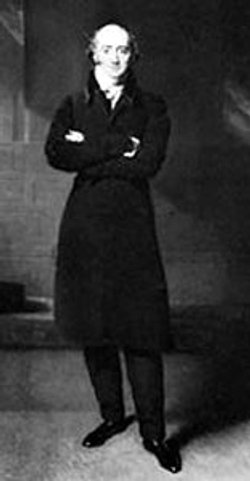Please login or click here to join.
Forgot Password? Click Here to reset pasword

|
Name: George Canning
Born: 11th April 1770 Died: 8th August 1827 aged 57 Associated towns Associated attractions |
Statesman
He was born in London 11th April 1770. His father died in poverty when his son was one year old, his mother, who was twice again married, was a not too successful actress for the next 30 years. His education was liberally provided for by an uncle, Stratford Canning, a banker and diplomat. (Viscount Stratford de Redcliffe [1786-??]
George Canning at the suggestion of Burke, entered Parliament for Newport, Isle of Wight, as a supporter of Pitt in 1794, and in 1796 he was appointed as under-secretary of state; and in 1798 established his reputation in speeches against the slave-trade. He was a writer for the Anti-Jacobin (1797-98). In 1800 he married Joan Scott, sister to the Duchess of Portland, she had a fortune of £100,000. Canning was in Pitt's later administration treasurer of the navy (1804-06). In the Portland ministry (1807) Canning as Minister of Foreign Affairs planned the seizure of the Danish Fleet, which did so much to upset the schemes of Napoleon. His disapproval of the Walcheren expedition led to a misunderstanding with Castlereagh, secretary at war, which resulted in a duel. He was later elected in 1812 for Liverpool, a seat exchanged for Harwich in 1822. In 1814 he was sent as Ambassador to Lisbon, and in 1816 was made President of the Board of Control, he resigned in 1820 as a result of the Queen Caroline issue.
He was nominated Governor General of India in 1822, and was on the eve of departure when Castlereagh's suicide called him to the head of Foreign Affairs.
He infused a more liberal spirit into the Cabinet, and also arranged the relations of Brazil and Portugal, being among the first to recognise the free states of Spanish America. In February 1827 paralysis caused Lord Liverpool to resign, and Canning formed an administration with the aid of the Whigs. His health gave way under the cares of office, and he died 8th August 1827 at the Duke of Devonshire's Chiswick Villa. He is buried, near Pitt, in Westminster Abbey.
His widow in 1828 was created Viscountess Canning.
The Canning papers are held as part of the Harewood House deposit in West Yorkshire Archives at Leeds
Information submitted by Alan Longbottom
| Sir Joseph Banks | Born 13th February 1743, died 19th June 1820 aged 77 |
| Thomas Bewick | Born August 1753, died 8th November 1828 aged 75 |
| William Blake | Born 28th November 1757, died 12th August 1827 aged 69 |
| Capability Brown | Born 1716, died 6th February 1783 aged 67 |
| Sir Richard Francis Burton | Born 19th March 1821, died 20th October 1890 aged 69 |
| Charles John Canning | Born 14th December 1812, died 17th June 1862 aged 49 |
| Henry Cavendish | Born 10th October 1731, died 24th February 1810 aged 78 |
| Captain James Cook | Born 27th October 1728, died 14th February 1779 aged 50 |
| Elizabeth Gaskell | Born 29th September 1810, died 12th November 1865 aged 55 |
| Robert Hawker | Born 3rd December 1803, died 15th August 1875 aged 71 |
| Robert Owen | Born 14th May 1771, died 17th November 1858 aged 87 |
| John Peel | Born 1776, died 1854 aged 78 |
| Robert Peel | Born 5th February 1788, died 2nd July 1850 aged 62 |
| Joseph Priestley | Born 13th March 1733, died 8th February 1804 aged 70 |
| Humphry Repton | Born 21st April 1752, died 24th March 1818 aged 65 |
| Peter Mark Roget | Born 18th January 1779, died 12th September 1869 aged 90 |
| Queen Victoria | Born 24th May 1819, died 22nd January 1901 aged 81 |
(ID = 15)